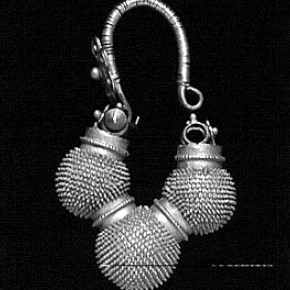Conservation Journal
April 1996 Issue 19
Conservation Course Abstracts: Update
It is some time now since we have had the opportunity in this Journal to publish abstracts of the written work presented by students on the RCA/V&A Conservation Course. As explained previously, MA students submit four pieces of written work (besides their conservation documentation) for assessment towards their degree. These include a History of Art or Design Essay, a Science Essay, a History of Materials and Techniques Essay and a report based on the Final Year Project. MPhil students, by contrast, are obliged to submit only two documents. The first is a formal Research Proposal, prepared early in the studentship, which sets out in detail the work they propose to do. The second is the Research Thesis which sets out the work they have done by the end of their period of research.
Most students answer set questions for their Science Essays and so there is little point in presenting abstracts. Hopefully, by presenting abstracts for the other written and research exercises, we can illustrate the diversity of the Course and the interests of its students.
Art and Design History Essays
Lorna Barnes
Ceramics and Glass Conservation
The Influences of Lead Glass on British Glass Designs, 1685-1745
January 1992
4500 words
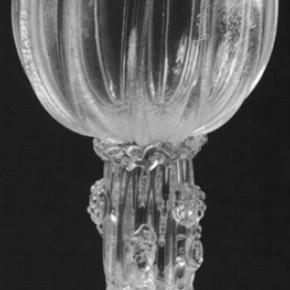
Figure 1. English Wine Goblet, Ravenscroft, about 1670. Museum no. 530-1936. Photography by V&A Photographic Studio (click image for larger version)
Before the creation of lead glass, soda and potash glass were used in Britain by glass makers. A brief history of glass manufacture in Britain and in Italy is given in this essay but the main focus is on the late 1670s when George Ravenscroft formulated the recipe for lead glass and a revolution occurred in the British glass industry (Figure 1).
Lead glass was much heavier than soda glass and had a much higher refractive index, making it a great deal clearer and more luminous than either soda or potash glass. It also had certain other qualities which allowed British glass makers to create vessels with a distinctively English style, concerned more with form than decoration. The development of lead glass and the subsequent effect on glass design is examined.
This period of creativity came to an end in 1745. Its demise was caused by various factors including government taxation and the accession of King George I. These are described in this essay and a final assessment of the state of British glass making at the end of the 18th century is given.
Marie-Thérèse Weech
Sculpture Conservation
Gandharan Art: Its Origin and Its Adoption Along the Northern Silk Routes
January 1993
4000 words with illustrations
The similarities of style between the art of Gandhara and that found along the northern silk routes of Tibet and China are explored using literary sources and observations of exhibits found in the V&A and the British Museum. The question of origin and inspirational source is addressed using the principle theories that have been proposed by both art historians and archaeologists of the present and past.
Merete Winness
Furniture Conservation
Norwegian Furniture Design in the Industrial Age
January 1994
8500 words with illustrations
This essay focuses on the development of Norwegian furniture design in the Industrial Age. It deals with the transformation from a craft using hand skills to a rational, mechanized industry for mass-production, and how this has determined the influence of designers on product development and design as a profession. Comparisons with other Scandinavian countries are made throughout, firstly to put Norwegian furniture design into a historical context, and secondly to evaluate how Norway has broken with Scandinavian design in recent decades.
Sonja Müller
Textile Conservation
Opus Anglicanum
January 1994
6500 words and illustrations
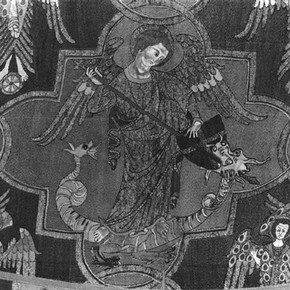
Figure 2. Opus Anglicanum, detail from Syon Cope. Museum no. 83-1864. Photography by V&A Photographic Studio (click image for larger version)
Opus anglicanum is Latin and literally translated it means 'English work'. In art history this term is specifically applied to English embroidery produced in the Middle Ages, mainly during the period 1250-1350. It is an extraordinarily fine and detailed embroidery worked mostly in silk and gold thread (Figure 2). Opus anglicanum objects were as highly regarded as jewellery and paintings and were conceived as a form of art fit to be used as diplomatic gifts from and for kings and other magnates. As such, or by direct commission, these embroidered textiles found their way to Austria, Belgium, France, Germany, Italy, Sweden and Spain.
It seems curious that this art form reached its high status almost suddenly from so little tradition and lasted only for this relatively short time span of a hundred years. How was it able to achieve such perfection and what were the historical circumstances which led to the rise and fall in its popularity? There are barely a hundred surviving examples of opus anglicanum. These constitute the primary source of research but they cannot provide a complete picture. Unfortunately, there is little documentation of production practices and other sources - such as inventories, records of accounts, descriptions in letters or diaries and parallels to other contemporary European work - still leave much room for speculation. The essay attempts to lay out a framework within which opus anglicanum was created and which at the same time predicted its fate.
History of Materials and Techniques essays
Lorna Barnes
Ceramics and Glass Conservation
An Examination of the Materials and Techniques Used in the Production of Maiolica in Urbino, 1520-1560
October 1992
4000 words with illustrations
This essay is an attempt to examine the materials used and the techniques employed by the potters of Urbino during the period 1520-1560. It relies heavily on the treatise by Ciprianno Piccolpasso, written in about 1557, which tells of the kinds of materials available to the potters and details the making of the various 'colours' which are so characteristic of Italian Maiolica. The way in which the objects were made, the type of kilns and fuel used, and some examples of the type of object produced in Urbino during this period are also outlined in this essay.
Jenny Potter
Textile Conservation
Pattern Dyeing: Techniques of Batik, Plangi and Clamp Resist
November 1992
8500 Words and Illustrations
Resist dyeing is perhaps one of the earliest methods used by man to produce patterns on textiles. At its most basic, the equipment required is minimal: plain woven fabric, a dye and either bast fibre for tying or a wax or paste to paint a pattern. There is a theory that resists may have arisen for reasons of economy, for a plain woven fabric uses less yarn than a complicated weave and only needs a simple loom. It is a universal technique so examples may be found in most cultures and from most ages. An alpaca plangi cloth, circa 200 BC, is one of the oldest known and the same technique is still in use today.
Most of the terms used in the West for resist dyeing procedures derive from those used in Indonesia, because during the colonial times, European interest in this cloth was stimulated. Other countries which have a history of producing resist dyed textiles have their own names for this technique.
It is easy to see how accidents in dyeing could have led to the development of resist dyeing and why the technique is so widespread. Grease or mud spots on a garment which was then re-dyed - a common practice in primitive cultures where fugitive dyes were often used - will produce undyed areas. That this was refined to produce beautiful cloth using only the simple tools available, is a constant source of amazement.
It often took months to produce these fabrics and as a result they were highly valued. There was often symbolic importance attached to them as they are the cloths of rite and ritual, used in ceremonies such as marriage or initiation. In the case of batiks, certain patterns were reserved for the use of royalty; in many other cases the type of cloth would indicate the wealth and status of the wearer.
Indigo was the most common dye used, especially when it was the only colour, but a whole range of dyes was useful, even fugitive ones, as garments were often dyed for particular festivals and later re-dyed for general use.
Vivienne Farmer
Metals Conservation
Metal Casting
September 1993
4500 Words
This essay is mainly specific to two foundries: AB Fine Art is a foundry casting in bronze by lost wax; and Taylors Foundry, more industrially biased, casting in sand using various alloys of aluminium, bronze and brass. The essay is based on first hand observation and experience, dealing with 'modern' casting processes - rather than from secondary sources of which there are few, and even less which are useful.
The basic principles of casting metal have remained the same since time immemorial. Developments, many this century, in easier-to handle materials such as air-setting sand and latex rubber moulds have speeded up or simplified processes but the principles remain the same. In addition, gelatine still remains cheaper to use than latex, 'green sand' than air-set. Therefore, the older materials are often used for economical reasons.
Lost wax casting and sand casting together cover the most usual and many of the oldest methods of realizing an original form in metal, and in the interests of brevity, the essay deals only with these.
Sonja Müller
Textile Conservation
European Wall Hangings: The Art of Tapestry Weaving
October 1994
8000 words with illustrations
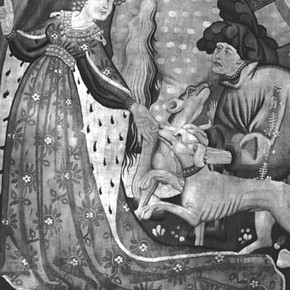
Figure 3. Detail from Boar and Bear Hunt, woven tapestry. Museum No. T-204 1957. Photography by V&A Photographic Studio (click image for larger version)
This essay is concerned with one type of textile: that of woven tapestry (Figure 3). It looks at European wall hangings from between the 15th and 18th centuries, and the kinds of equipment and skills involved in their making. It explores the unique techniques and the nature of materials which enable the tapestry weaver to transform a cartoon into a pictorial textile with depth and vivacity.
Generally speaking, tapestry is a tabby weave, but it has some special features that separate it from other tabby weaves. These are discussed in detail in the course of the essay.
The investigation also shows how techniques, materials and design are blended together to make a tapestry. They offer a vast range of possibilities, and it is the weaver's responsibility to select and employ the appropriate ones. Only with great expertise, analytical skill and a sensitivity for textiles can the weaver convincingly represent the design.
To show the extent to which tapestry weaving techniques can mimic other art forms, the essay gives examples of Southern German and Swiss tapestries from the 15th Century, which display various degrees of refinement in representation. As the technical difficulties are overcome, the decorations become more elaborate and life-like.
In considering specific examples, the essay focuses on the depiction and identification of weaving structures used in the representation of garments and furnishing textiles within tapestries. The weaving technique for the identified tapestries is set in contrast with the tapestry weaving technique. This serves to highlight some of the fundamental technical differences and confirms tapestry weaving as an independent art form.
Lynne Humphries
Sculpture Conservation
Polychrome Decoration of Stone and Walls in the Medieval Period: Techniques of Production and Manufacture of Major Pigments
October 1994
8617 words
It often comes as a surprise that medieval sculpture, like that of the Greeks, was originally coloured. An idea of the brilliance of the work can be seen by turning to the illuminated manuscripts of the period. As soon as the masons had completed their work, the whiteners were called upon, these were followed by the painters and gilders. Frequently, the sculptor was mason, whitener, painter and gilder in one.
This essay intends to give a very general introduction to polychrome decoration of both stone and wall paintings of the Middle Ages, outlining major areas from the ground layers to mediums and pigments. The main emphasis is on the major pigments of the time in Western Europe, concentrating on basic techniques of production or manufacture of individual pigments. Many of these pigments would have been combined with another to produce a greater variety, but unfortunately there was not space, at this time, to deal with this aspect of the art.
Hannah Eastwood
Conservation Science
Materials and Techniques Used by Southern German Sculptors in the Late Gothic Period, 1480-1530
October 1995
7000 words with illustrations
The late Gothic sculptors of Southern Germany were highly talented and skilled craftsmen. The religious sculptures produced during this period were mainly free-standing altarpieces and figures carved and decorated in a naturalistic style. The materials and techniques used in the production of these objects are considered, with particular emphasis on those made from limewood. Methods by which the highly ornate polychrome finish was created are discussed. A brief summary of where, and by whom, the sculptures were made is followed by an account of the materials and techniques.
Limewood has specific qualities which make it a highly tractable material for the carvers and the range of tools employed are considered. The preparation of the wooden surface for the polychrome is interesting and the techniques used for this include gilding, silvering, painting and wax appliqué. Metallic finishes were common on the altarpieces as they exploited the flickering candle-light prevalent during this period. The specific pigments chosen by the craftsmen are discussed along with their application. The present-day state of the altarpieces does little to reflect their original stunning appearance. Careful analysis and microscopic examination enable accurate reconstructions to be made which lead to a greater appreciation of the medieval craftsmen.
Ariana Makau
Stained Glass Conservation
A Survey of Surface Decoration Techniques in Stained and Painted Glass
October 1995
6000 words with illustrations
The materials of stained glass have remained virtually the same since the craft was introduced in the early 13th century (with the exception of silver stain which was introduced in the 15th century). It is the techniques with which the materials are used that have fluctuated, following characteristics of art movements, schools of thought, country style and centuries of work that form the physical canon of stained glass.
This essay is not, nor does it attempt to be, a complete survey of the diverse art of stained glass. Rather, it concentrates on some of the dominant characteristics in the use of its materials. It begins with a brief description of the components of stained glass. Three major ways of approaching stained glass technology and production are explained and supported by objects in the collection at the Victoria and Albert Museum. Specifically, the following pieces are discussed: 'The arms of Godfricht Stomwell and Anna Christina Engels'; 'Santa Maria ora proa obra' from Munich, Germany; fragments of roundels from St Denis, France; Guglielmo Marcilla's 'Adoration of the Magi' from Italy and both 'Imago Bupsiohves Martyris and Medae' and 'Imago Amoris and Imago Alcestis Martyris' by Mr Glasby. Support is also drawn from literature contemporary to these pieces from known stained glass artists. A detailed description of the basic materials and tools used in stained glass can be found in the glossary at the end of the essay.
Andrew Lamb
Musical Instruments Conservation
Brass: The Use of Copper/Zinc Alloys in the Construction of Historical European Lip-Activated Instruments (Trumpets)
October 1995
7500 words
This essay was inspired by work I had been doing on a trombone made by Michael Nagel of Nuremberg in 1663. The instrument is of interest for several reasons. It is part of a large collection of musical wind instruments and is representative of a particular era of technological development and musical tradition. It has a number of problems connected with material deterioration and its origin and provenance have been called into question as a result of an inspection of its decorative features. As a museum object, it provides a window into a series of issues which concern the preservation of historical material and evidence. The use of material in instrumental construction is only one of these.
In writing this essay I am seeking to approach some of the ways in which brass wind instruments were, and still are, being made. This is a large subject so, out of necessity, I have concentrated on only the most common and well reported methods. This approach has meant that the subject has tended to ignore non- European fields of development.
One of the questions I have considered is the use of specific materials and their possible acoustical contribution to the sounds of the instruments. It is a debate which constantly exercises the musical instrument community and has formed the basis of a fertile field of acoustical investigation.
Certain aspects of instrument manufacture are more concerned with fine art than the craft of construction. In the past, instruments have been adorned with pigments and decorations in order to embellish their appearance. It is not intended to deal with these features to any great extent as they have contributed little towards the development or acoustical properties of the instruments. Equally, brass wind musical instruments have been accorded many musical roles throughout history. They have been used to signify leadership, royalty and martial endeavour. This is an aspect of the history of the instruments which is also not covered in this paper.
Lisa Oestreicher
Architectural Paint studies
Graining in England in the 18th and 19th Centuries
October 1995
7500 words
This essay is an investigation of the materials and techniques used in the decorative imitation of timber finishes using painting materials. A short summary of the history of graining is given as well as an outline of the resource materials available to the researcher. The tools which were commonly used are then discussed and illustrations are included to give a clearer idea of the range of equipment available. The principle materials used in graining are also examined, commencing with a review of the most commonly applied pigments and additives, as well as mediums, solvents and coatings. In the next section, an outline of the techniques involved in graining is provided with an emphasis on the more developed methods involving the manipulation of translucent glazes over opaque grounds. A description of the techniques found in oil graining is first discussed, followed by methods which use a distemper medium. The final section looks in more detail at the execution of oak, mahogany and walnut graining in an attempt to describe more fully the range of materials, tools and techniques available to the English grainer in the 18th and 19th centuries. Finally, illustrations are included of finished graining examples of the three woods discussed.
Final Year Projects
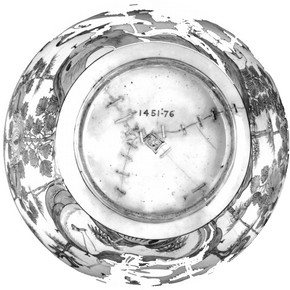
Fig 4. Persian bowl with corroded rivets, 17th century, Museum no. 1451-1876 (click image for larger version)
Lorna Barnes
Ceramics and Glass Conservation
Iron Staining in Porous Ceramics: Methods of Removal
May 1994
10,500 words
This project was aimed at finding a safe viable and effective treatment for the removal of iron stains from porous ceramics (Figure 4), which could be used in a ceramics conservation studio with relative ease. It reviews the history of riveting and looks at treatments which have been used in the recent past for the removal of iron stains. It then examines four treatments with a view to finding out if they are safe, viable and effective. The findings of the project are preliminary and chapter five contains recommendations for further work.
Vivienne Farmer
Metals Conservation
Work of Thorns: A Study of the Indian Technique of Bábul, Khárdár or 'Work of Thorns'
March 1995
14,000 words with illustrations
This research project is a technical study of a particular Indian jewellery technique, known as bábul or khárdár (Figure 5). The material for this research is a group of 1850's jewellery from Delhi, now a part of the V&A's Indian Collection, backed up - and compared with - a number of fairly contemporary pieces of literature.
The technique is generally applied to gold, although there is one piece of jewellery in this group which is silver. The essay begins with a general discussion, based on a government report published in 1890, on the use of gold, gold alloys and solders. The bábul work itself is described in a second publication of an earlier date.
The technique is studied using this written material and by examination - using light and electron microscopy - of the jewellery itself. These studies are reinforced by practical experimentation, using silver and gold in an attempt to reproduce the technique.
One conclusion drawn from the microscopic examination of the jewellery was that the bábul work studied had actually been created using two different techniques, only one of which is described in the available literature. Attempts to reproduce the undocumented technique, although enlightening, were not entirely conclusive, and scope exists for further practical research. However, reproduction of the documented technique proved very successful, yielding further information on this subject.
Marie-Thérèse Weech
Sculpture Conservation
A Study of Saint Anne and the Holy Kinship, a Polychromed Wood Sculpture of the Late 15th - Early 16th Century
March 1995
14,500 words with illustrations
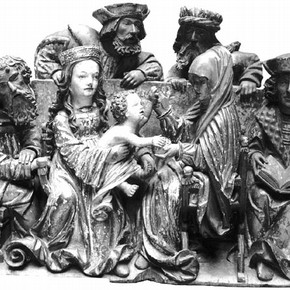
Figure 6. Saint Anne & The Holy Kinship before conservation. Museum no. 1306-1872 (click image for larger version)
The project is centred around a polychromed wood sculpture of St Anne and the Holy Kinship (Figure 6). It is divided into two parts. The first part sets the historical scene, in which the object was conceived, by researching the history of St Anne and her rise in popularity. It summarises the various iconographic representations of St Anne and focuses on the catholic incompatibility of the depiction of her with her three husbands.
The second part of the project covers the materials and techniques used in the process of making the altarpiece and its conservation. The decorative technique of press brocade (a style of raised decoration) is found on the object. Owing to the differing types of press brocade particular interest is taken in ascertaining the materials and techniques used in the making of this particular one. As well as literary research, analysis of the press brocade through gas chromatography/mass spectrometry was undertaken by the National Gallery to identify the ingredients and their proportions. Paint sample cross-sections were taken at the V&A. With both these types of analysis, as well as literary research, a very good idea of the process of making the press brocade on the St Anne altarpiece was gained.
Lynne Humphries
Sculpture Conservation
Saint Gregory: An Historical and Technical Investigation
June 1995
15,000 words with illustrations
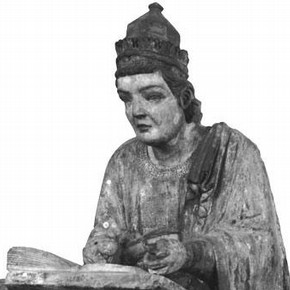
Figure 7. St Gregory, probably 14th Century. Museum no. A34-1913. Photography by V&A Photographic Studio (click image for larger version)
In the Victoria & Albert Museum there is a life-size polychromed Italian limestone sculpture of a man seated writing at a desk (Figure 7). The figure is believed to depict Saint Gregory the Great and was probably carved and painted for the façade of a church in Verona in the 14th century.
Much uncertainty surrounds all aspects of this figure, from its provenance to its conservation history. However there are two factors which are definite in relation to the figure. Firstly, that it is suffering from extensive salt damage and has been for a considerable number of years. Secondly, in 1976, the sculpture was consolidated with a silane by a method of vacuum impregnation, in an attempt to curb the destruction caused by the salts.
The aim of this project was to piece together as much information as possible about the figure of Saint Gregory in order to attain an understanding of the sculpture as a whole. It is hoped to place the figure in a historical perspective from theories on the figure's Veronese history as well as its conservation history. These were related to the condition of the piece today, and this in turn, to a specific understanding of the action of the salts and silane. The final aim is to suggest a course for future conservation treatment.
MPhil Theses
Jane Davies
On Gilded Clouds: A Study of the Materials of Oil on Plaster Mural Paintings in the UK Dating from the Late 17th - Early 18th century
September 1994
50,000 Words
This thesis presents the result of research into the materials and techniques of Baroque mural paintings in England, dating from 1684 to 1729. It is divided into four parts: background information; the results of microscopic and instrumental analysis contextualised by reference to contemporary written sources; concluding information; detailed information given in the appendices.
Part one contains an introduction and chapters 2-4. Documentary, primary and secondary written sources of relevance to the project are viewed in chapter 2. The art historical background to the mural paintings is discussed in chapter 3. The aim of this chapter is to provide sufficient background information to enable the detailed analysis of materials and techniques to be understood within an art historical framework. The methodology adopted for technical analysis is outlined in chapter 4.
Part two contains a discussion of the information which has been gained from sample analysis. Chapter 5 discusses the preparation of the plaster support to receive oil paint. Modification by the artists of the surface skim plaster layers was identified during analysis; the methods and possible rationale for these procedures are assessed. Chapter 6 focuses on the ground layers found to be present within each painting. The function of the identified ground layers is discussed. The use of comparatively cheap pigments and those possessing siccative properties has been identified. Chapter 7 details the pigments and the media which have been identified and contains tabulated information which allows comparison of the pigments listed in contemporary writing with those found within samples from the paintings. The techniques employed by Baroque mural artists in painting drapery are discussed. Very expensive pigments have been identified in several of the paintings examined; their use and the implications for the status of these paintings are considered. The use of pigments which appear to be uncommon in the contemporary English palette has been noted and two examples are given. The use of oil media is discussed as the final section of chapter 7.
Part three comprises discussion and conclusions to evaluate and summarise the information which has been presented in the thesis. Chapter 8 discusses documentary evidence of early deterioration of Baroque mural paintings. Chapter 9 contains conclusions.
Part four is composed of eight appendices which contain in text, tabulated and photographic form, the essential detailed information upon which conclusions are based. Appendix 1 contains, in chronological order, information on each of the paintings studied. This generally includes artist, date of painting, subject, assistants, patron, site, physical history, bibliography, acknowledgements, a photographic illustration of the painting, and a list of samples taken, together with a photomicrograph and table of analytical results for each relevant sample. Appendix 2 provides copies of certain spectra obtained from instrumental analysis, labelled to assist the reader with interpretation. Appendix 4 also contains a transcription of a number of pages from the 'Verrio, Burghley archive' which has been an important manuscript source for this project. Appendix 4 also contains a transcript and translation of two pages of Félibien's work on painting techniques. Appendix 5 is a short glossary of terms. Appendix 6 contains examples of pro forma sampling and analysis sheets produced in situ and during laboratory work. Appendix 7 contains example printouts from the database compiled during the research project which contains background information on the extant Baroque murals of the period. The information gathered here assisted the research project and may also be of use to future research in this area. Appendix 8 provides further explanation of the instrumental methods of analysis which have been used within this project.
April 1996 Issue 19
- Editorial
- Preparing for Morris - the Treatment of a Philip Webb Painted, Silvered Chest
- Conservation Course Abstracts: Update
- Conservation Liaison - Stained Glass for the William Morris Exhibition
- Digital Imaging and Stained Glass Conservation
- The Restoration of the East Staircase Ceiling and the Leighton Corridor, Victoria & Albert Museum
- The 'Leighton Project': Backstage
- Printer Friendly Version
